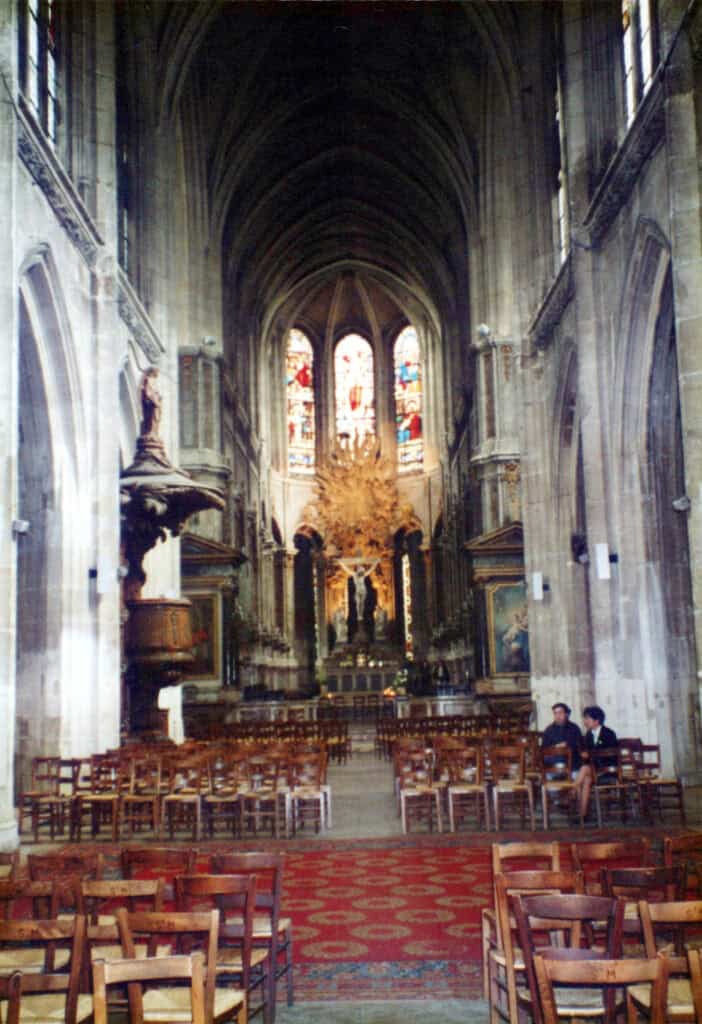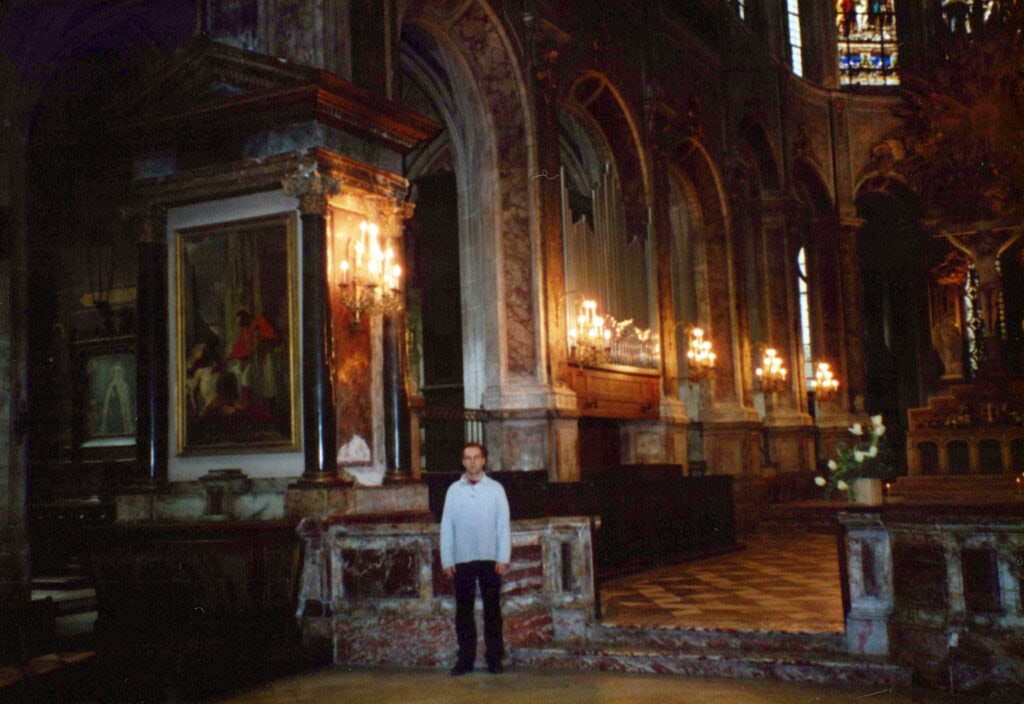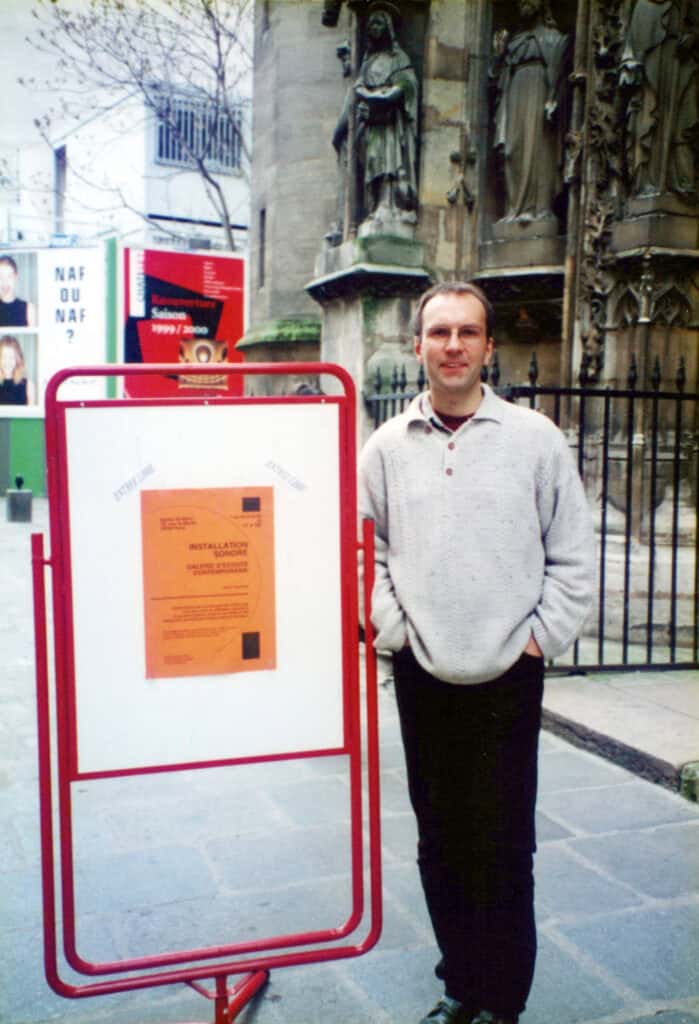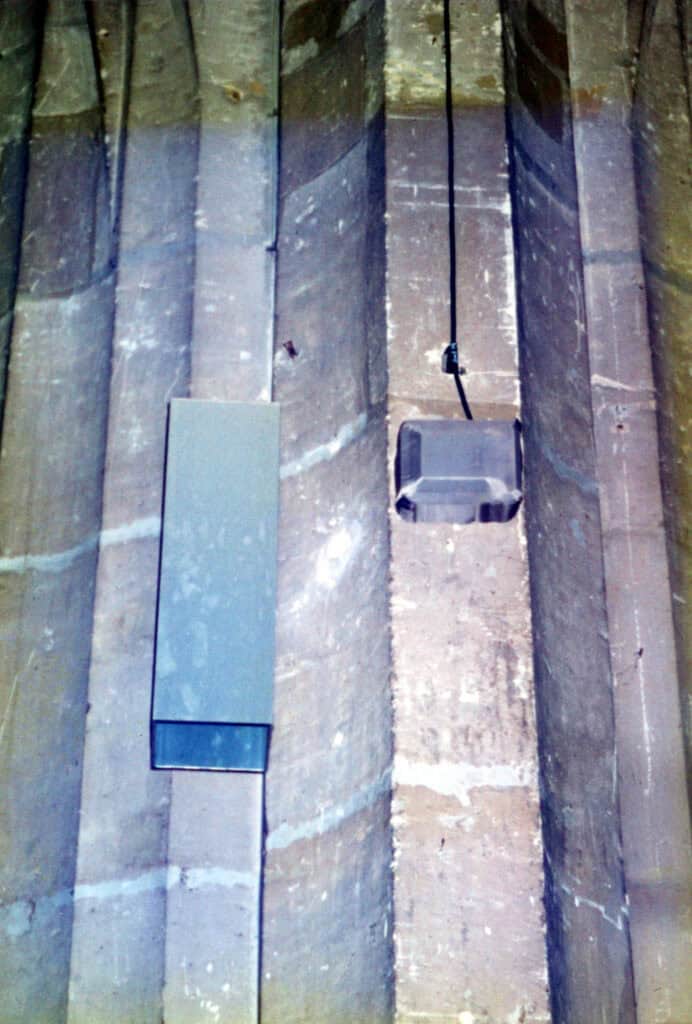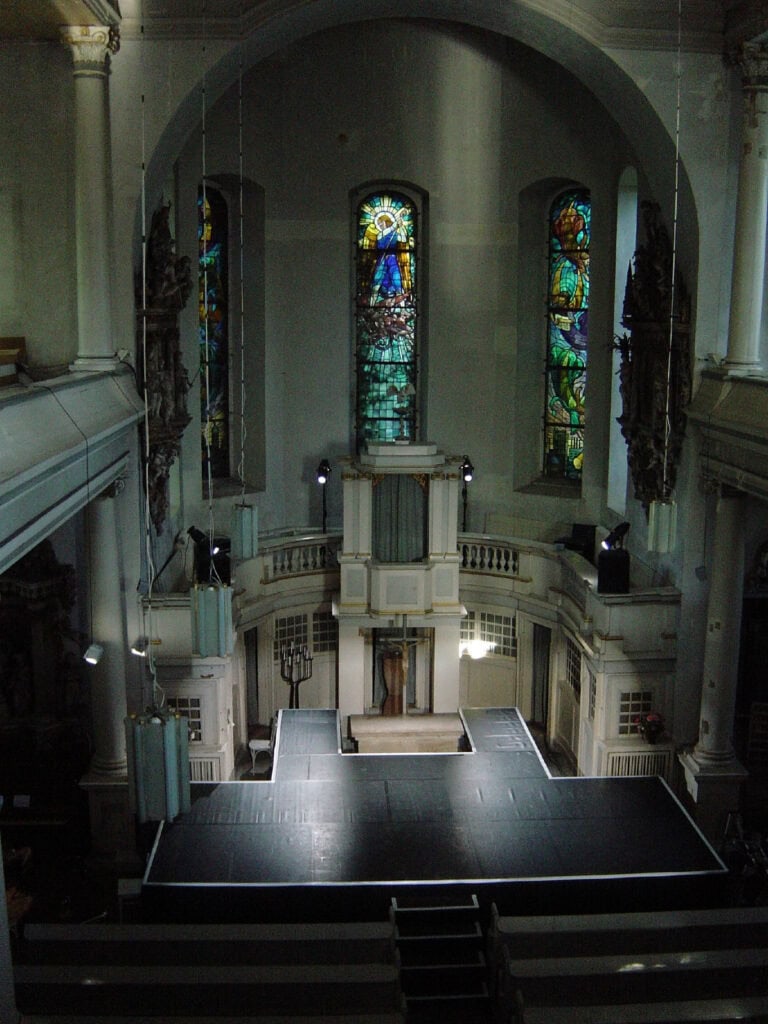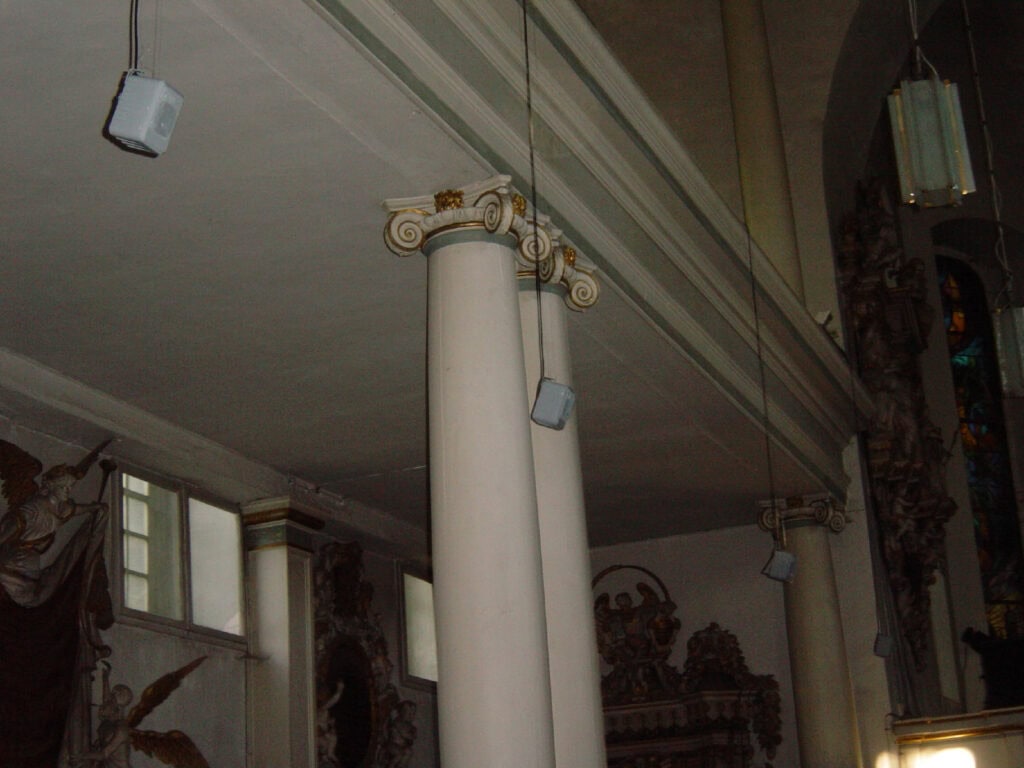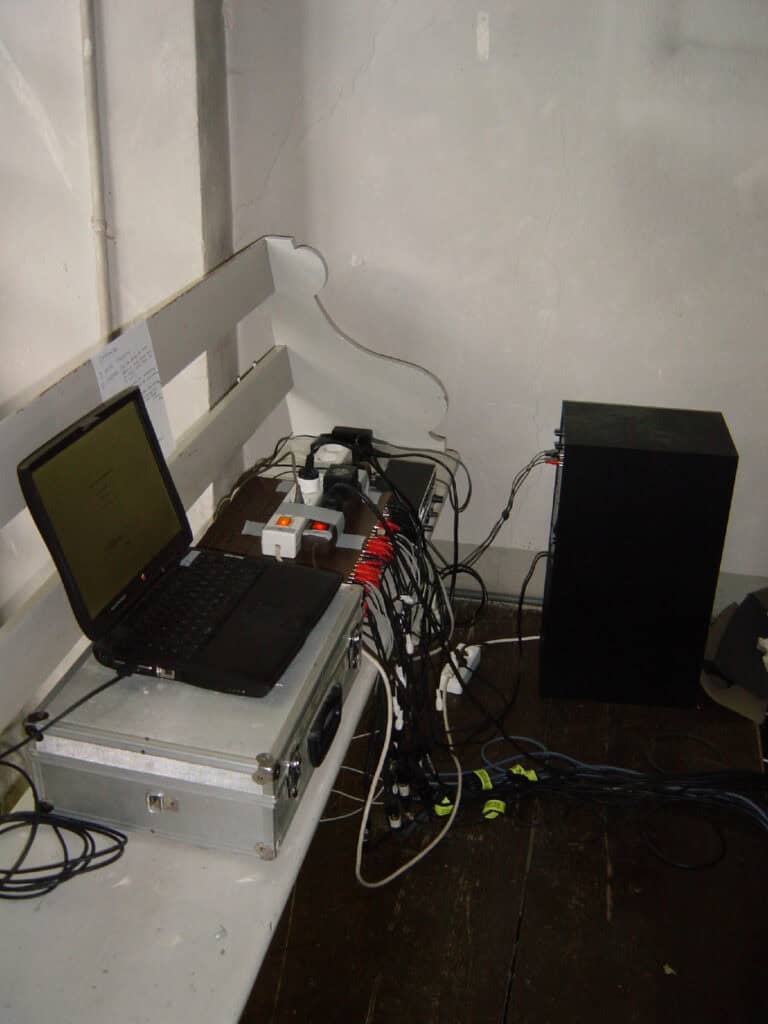Die Kirche als Klangskulptur
Paris St. Merri, April 6 – April 18, 1999
Basel St. Elisabethen, May 2 – May 12, 1999
Plovdiv St. Elena and Konstantin, June 6 – June 19, 1999
Weimar St. Jacob, July 31 – August 14, 1999
Jena Friedenskirche, August 15 – August 31, 2003
The Church as Sound Sculpture is a project that embraces Weimar’s traditional roots and juxtaposes them with snapshots from other cultures. Weimar, this year’s European City of Culture, is known not only for Goethe and Schiller but also as an important site in music history. While Johann Sebastian Bach embraced the new forms of Italian music in Weimar, Franz Liszt—one of the first truly European artists—revived long-forgotten works by the former court organist. In his “Faust Symphony,” Liszt transformed Goethe’s masterpiece into a “symphonic poem,” expressing the characters of Faust, Gretchen, and Mephisto through individual motifs. Just as these melodies characterize individual figures, listening allows one to grasp the uniqueness of different places. In the sound sculpture, historical testimonies and contemporary sound signs are interconnected.
On my travels over the past few years, instead of photographs, I collected “acoustic postcards.” I recorded traditional music, bells, the sounds of churches and temples, children’s songs, and street noises in various countries. The oldest sound object is a bell from the 10th century, while the most recent recording was made just a few days ago in Paris. I have always been fascinated by the idea that all these sound events occur simultaneously—here and now, somewhere on one of the continents. The sounds speak of the diversity of cultural and religious traditions, and even seemingly trivial episodes reveal highly distinctive qualities: every city has its own sound. The church, as a place of silence, prayer, and retreat from everyday life, resonates with echoes of both nearby and distant sound worlds.
The 16 speakers, discreetly integrated into the architecture of the church, are controlled by a computer. This computer interprets a “score” of possible sound sequences, selects composed sequences, and reassembles them anew each time. The installation begins its journey across Europe in April 1999 in Paris, where it will be heard for 14 days in St-Merri. Basel forms the second stop on the route, which continues via Plovdiv (Bulgaria) and Liechtenstein to Weimar. In each city, additional recordings are made during the installation, which are then incorporated into the following presentation. In this way, when the installation finally reaches Weimar, it will acoustically embody the “memories” of its journey. The opening of the sound sculpture is accompanied in each city by a concert from the Ensemble for Intuitive Music Weimar, which responds improvisationally to the respective sound environment.
The recordings come from the following countries: Belgium, Bolivia, Brazil, Bulgaria, Colombia, Costa Rica, Germany, Ecuador, France, Holland, Indonesia, Ireland, Italy, Malaysia, Mexico, Austria, Peru, the Philippines, Portugal, Switzerland, Singapore, Spain, Thailand, Hungary, and Venezuela.
